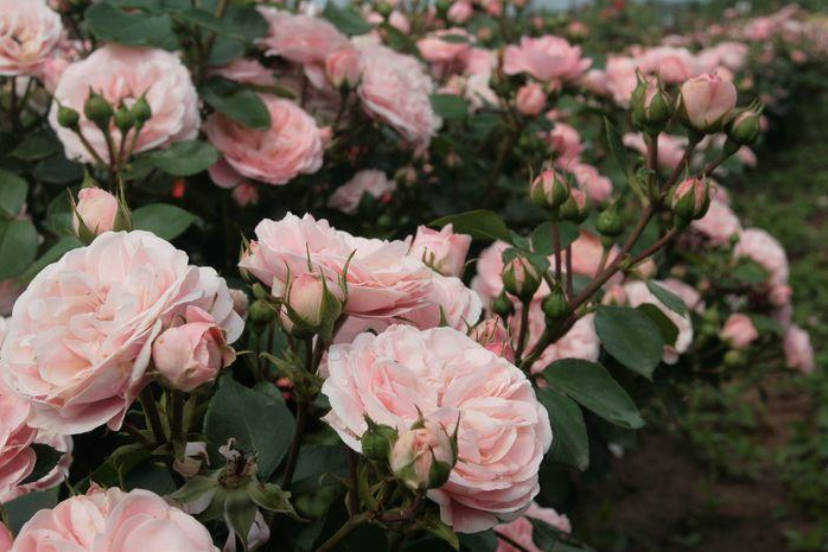If your garden roses bloom poorly, if they get sick or lose their leaves, do not look for blame, look for the weakest link.
Look for the weak link!
If roses were really so difficult to grow, as the rumor goes, they would not have remained a favorite garden culture for centuries. Most of the problems are not in roses, and in their lovers: an unsuccessful landing site, poorly prepared soil, the choice of unstable varieties, etc.
When growing roses, the following chain of conditions and actions is important: sun — possibility of airing of landings — land — drainage — stability of a variety — qualitative landing material — the correct landing in favorable terms — systematic leaving. Now about every “link”.
How much sun does Rosa need?
Roses, like most other garden plants, love Sunny places, but suffer from a debilitating heat. They can not grow in a dense shade, although known varieties that tolerate partial shade.
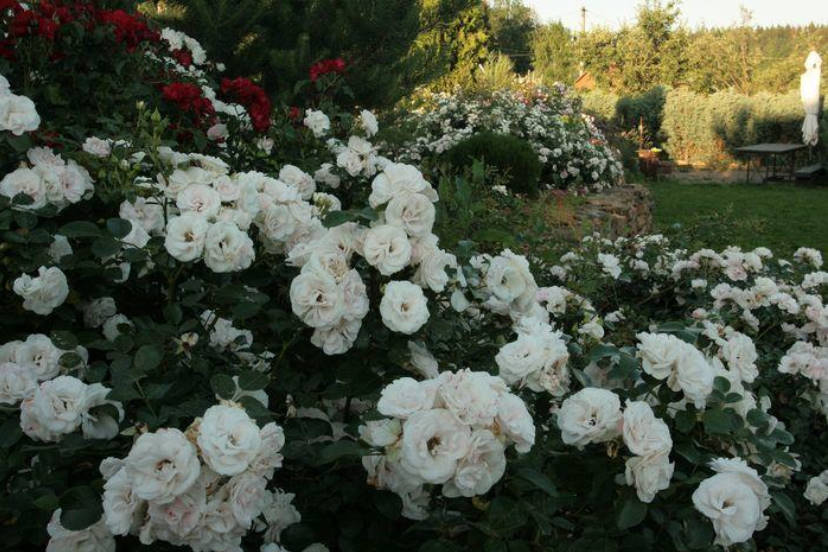
Among the abiotic (i.e. non-biological) environmental factors affecting the growth and development of plants, the main one is sunlight in all its aspects (radiation, intensity, spectral composition, duration, etc.). Roses develop better in open Sunny places, especially in Northern areas. Calculations and observations show that on the southern slopes with a slope of only 3-5° the soil warms up and keeps up 7-10 days earlier.

It is believed that a better effect on roses morning, before the afternoon sun and afternoon, late afternoon. Conditions where roses get 4-5 hours of direct sunlight meet the requirements of the culture. In the shadow of the rose bushes stretch, become thin-stemmed, a little leafy bloom is weaker and smaller flowers.
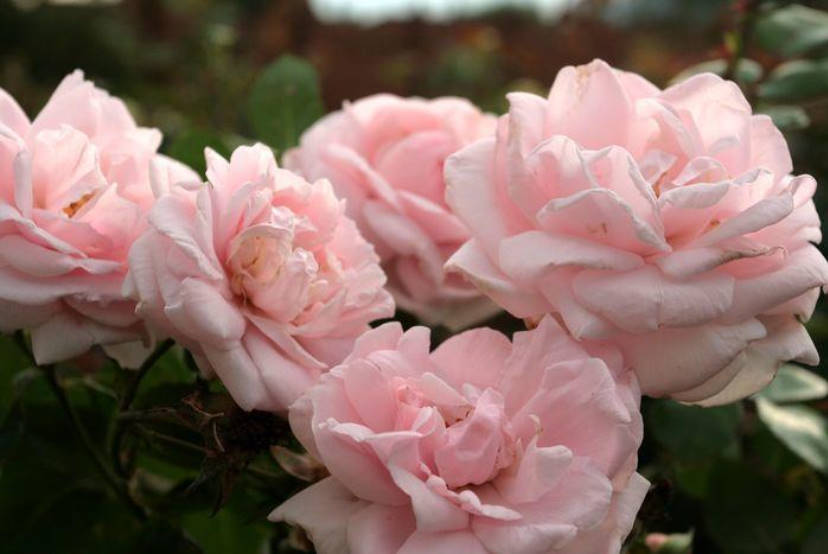
In conditions of shading, it is necessary to eliminate the influence of other adverse factors and provide roses with better conditions and good care (loose and fertile soil, good drainage, regular watering, balanced nutrition and ventilation).
Experienced lovers of roses may have noticed that the North side of the Bush always behind in flowering from the South, more illuminated.
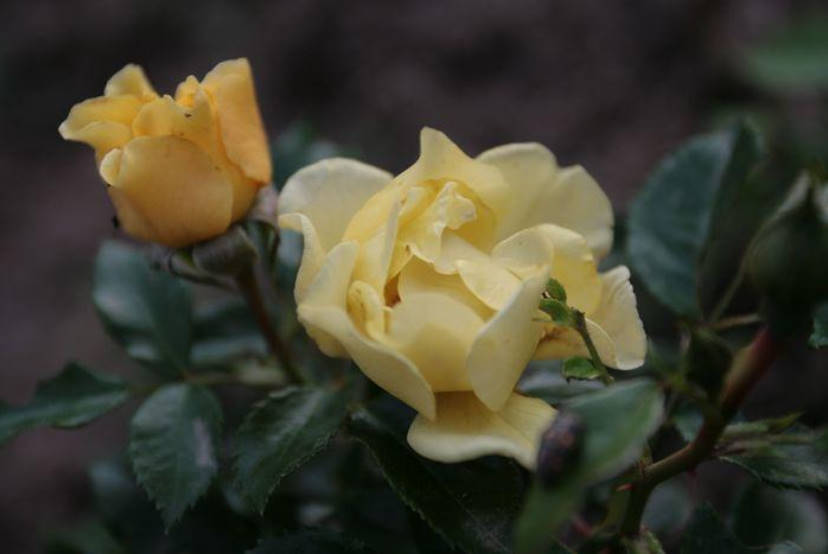
However, the excess sun at midday is unfavorable for roses: some varieties accelerate the period of blooming buds, flowers flash, and the colors fade. Especially suffer in the scorching sun dark red roses, their flowers turn blue, and the tips of the petals burn, before turning around. Easy sliding shadow in the hot noon roses useful.
Planting roses needs some fresh air
Planting roses need ventilation, but can suffer from cold and strong winds. Constant air circulation reduces the risk of infection with phytopathogenic microflora and pests. Ventilation is especially necessary in conditions of excessive moisture and in closed low places where cold air waves roll.
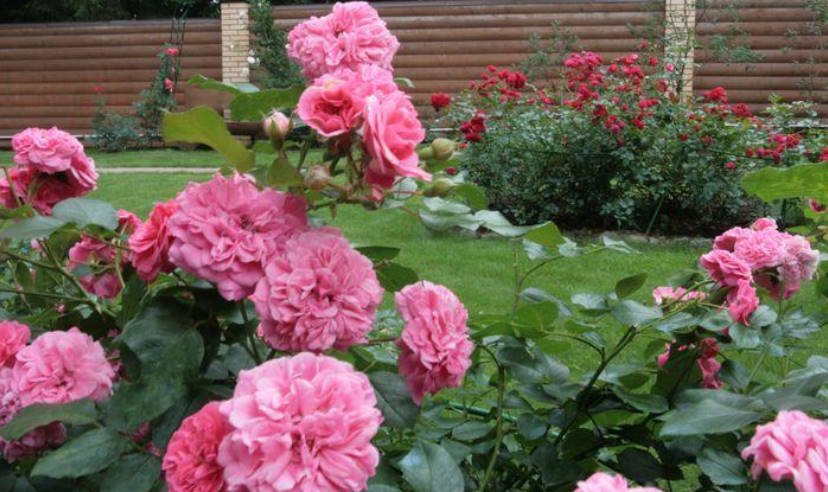
Dry foliage or the possibility of rapid drying after rain with good ventilation plantings delays the development of such a dangerous fungus disease as black spot. Infectious structures of the fungus are transferred to the surface of the rose leaf mainly splashes of raindrops and insects, and germinate only in the presence of water droplets.
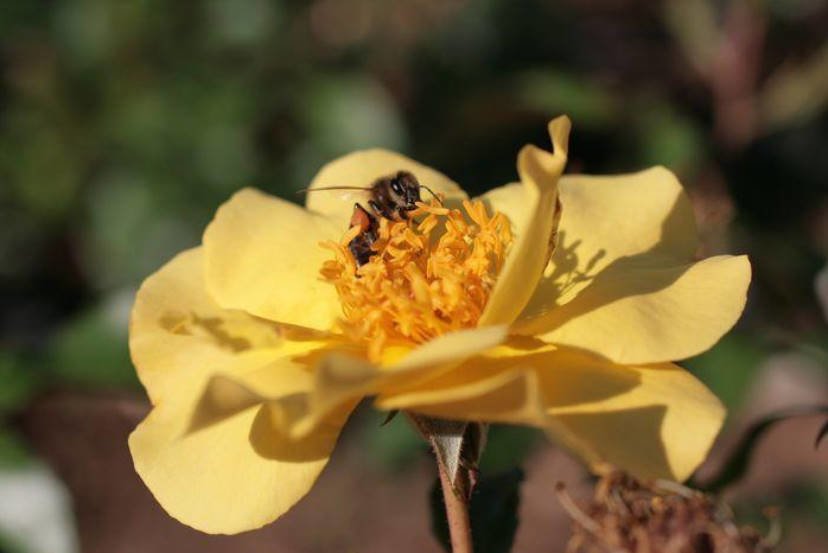
High humidity is not enough to infect. I advise you to remember this when watering roses by sprinkling, and even in the evening.
The negative effect of the wind is to increase unproductive evaporation from the soil surface, causing soil drought, and to strengthen plant damage in atmospheric drought. Strong winds often cause plants mechanical damage, causing excision of leaves, flower breakage, breakage of shoots. Wind speed and direction should be taken into account when feeding fertilizers and processing chemicals.
North-Eastern, cold and dry winds in winter cause a significant decrease in temperature and, sweeping away the snow cover, endanger the freezing of the root system of plantings. Irreparable damage to the plantings cause spring winds, very dry soil and shoots, still devoid of foliage.
The earth need to prepare carefully in advance
For successful culture of roses need fertile loam, structural, water and breathable. The main mistake when you bookmark rosaries is that roses are trying to grow in almost pure peat. Read the specification on the composition of garden land, which you buy in garden centers, most often mixtures are prepared on the basis of peat with the addition of mineral fertilizers. In peat roses grow hard, get sick and winter badly. Such conditions can not stand even the most resistant varieties. Peat can be used to improve soil structure, but not more than 1 shovel per Bush.
Rose better feel for the following types of soil:
- gray forest,
- chernozems,
- weakly acidic with a pH level of about 6.5.
If you plant roses on a site where roses grew for a long time, you will have to replace the soil, it is depleted and can be infected with pathogens of fungal diseases. The cultivation of monocultures leads to:
- unilateral depletion of soil minerals,
- deterioration of their physical properties,
- reduction of humus content.
Soil depletion in monoculture is also associated with the harmful effects of substances released into the soil from plants. The most active substances are isolated from the aerial part, especially the leaves, then the stems, and the least active — from the roots.
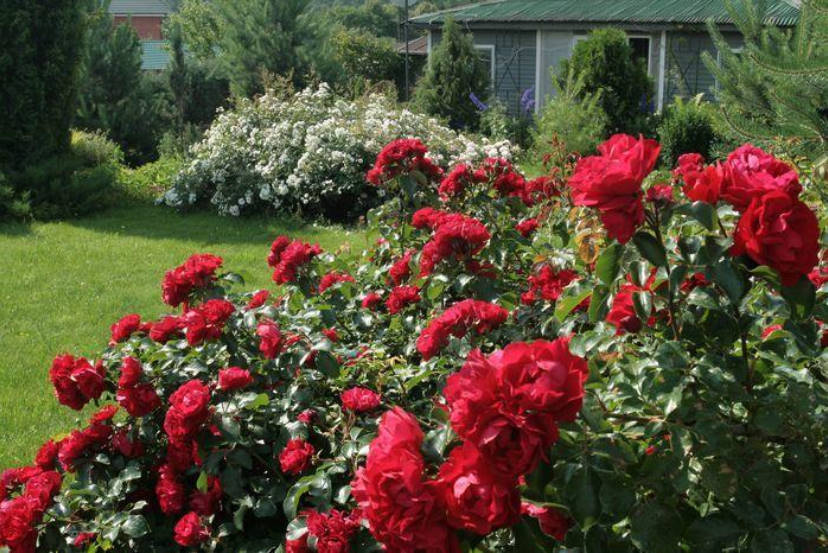
The soil should be deeply processed. Sometimes the earth is dug only on a bayonet of a shovel, and the subsoil layer from dense clays is not removed. In such conditions, rootstock roots can not breathe and develop normally, and therefore, fully supply the shoots with water and nutrients. Sometimes the ground is not prepared in advance, and put the roses in a fresh pit. Roses settle with the soil, and the planting of roses is buried. With a buried landing, the growth of new shoots becomes difficult, roses look depressed and age quickly.
When is drainage necessary?
Groundwater table at a depth of not less than 0.8 m is a prerequisite for a successful rose culture. Closer standing of groundwater has a negative effect on the vital activity of roses, which consists in the fact that aerobic bacteria that contribute to the normal oxidizing processes in the soil are replaced without air access by anaerobic. As a result, iron oxide and organic acids, poisonous to the roots of salt, accumulate in the soil. The location of the site should exclude the possibility of flooding. Spring flooding or waterlogging in excess of 5-7 days is especially dangerous for young plantings: roots do not breathe and rot, and the buds on the outer green shoots do not germinate.
Choose sustainable varieties
Often, already starting with the choice of varieties, fans condemn themselves to voluntary slavery. I sometimes out of curiosity you look on forums where losers are asking for help in growing some varieties that no matter what level of care will not be healthy. Perhaps that is their informed choice, I want to see any in the picture a rose in your garden, though, and heard about possible problems. But, if the task is to decorate the landscape without unnecessary stress, you need to plant other varieties.
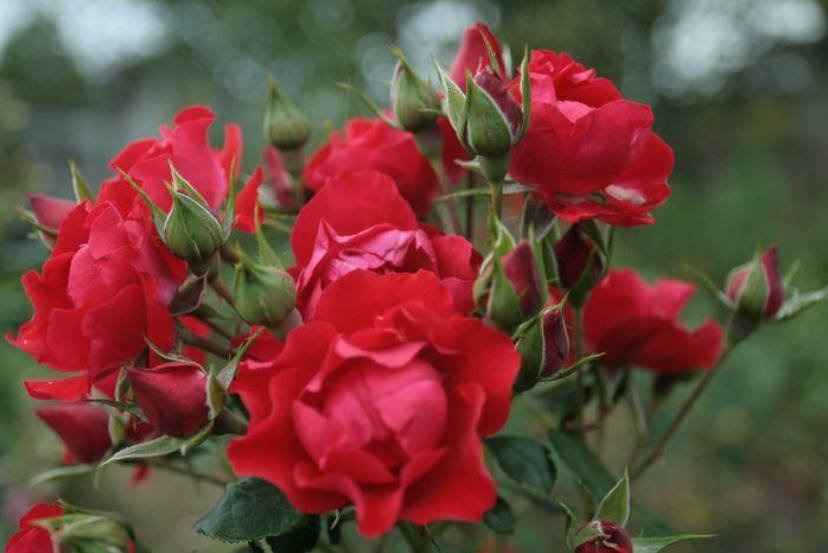
Who can please the rose, which in mid-July loses foliage affected by black spot? Infection can be controlled by regular spraying of leaves with fungicides, but spraying is not only costly, but, as has long been recognized, environmentally unfavorable. For this reason, the use of resistant varieties is recognized worldwide as the most effective method of controlling black spot.
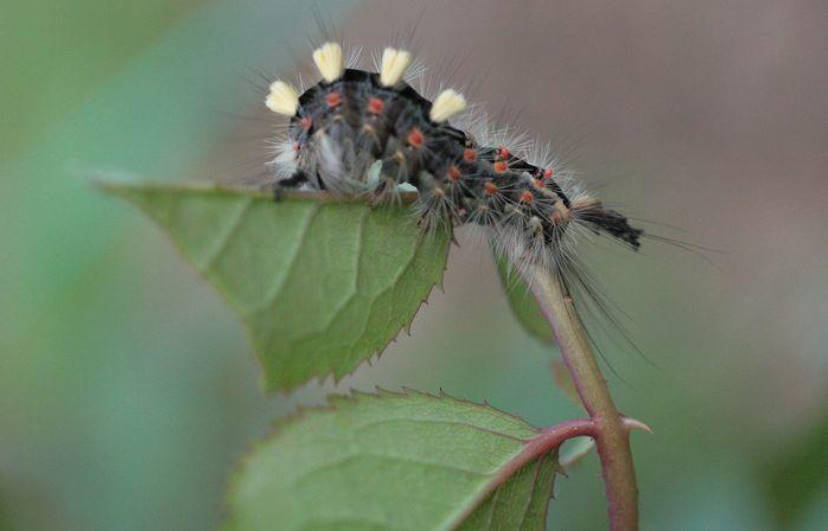
The determining criterion when choosing a rose should be the stability of the variety. The ability of plants to show stability is due to a complex of factors, the effect of which complicates the development of the disease or completely prevents it. Stability is inherited, it can manifest itself at certain stages of plant development.
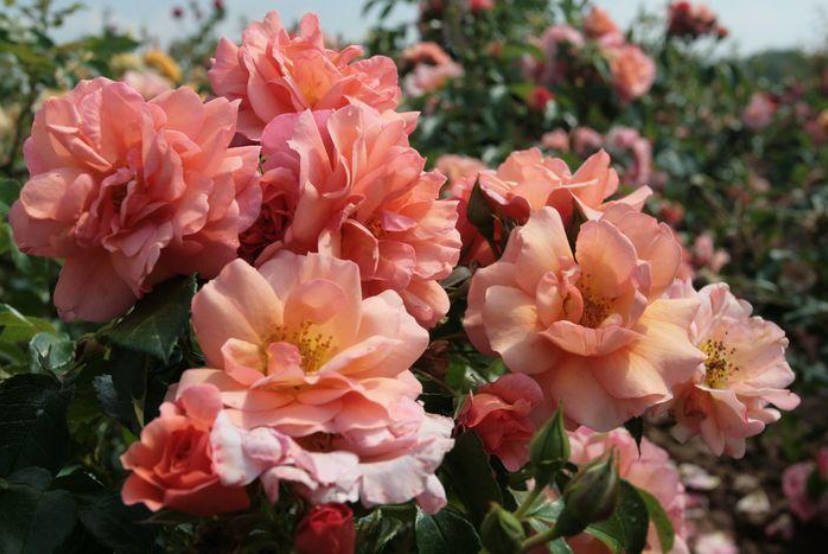
The question immediately arises as to why breeders do not prioritize the development of only sustainable varieties? I see two things here. Breeders strive to produce sustainable varieties and have long been working in this direction, but this path is not easy, not fast and expensive. Modern conditions of technogenesis also lead to increased variability of microorganisms and contribute to a sharp acceleration of the processes of conjugate evolution of parasitic organisms with plants.
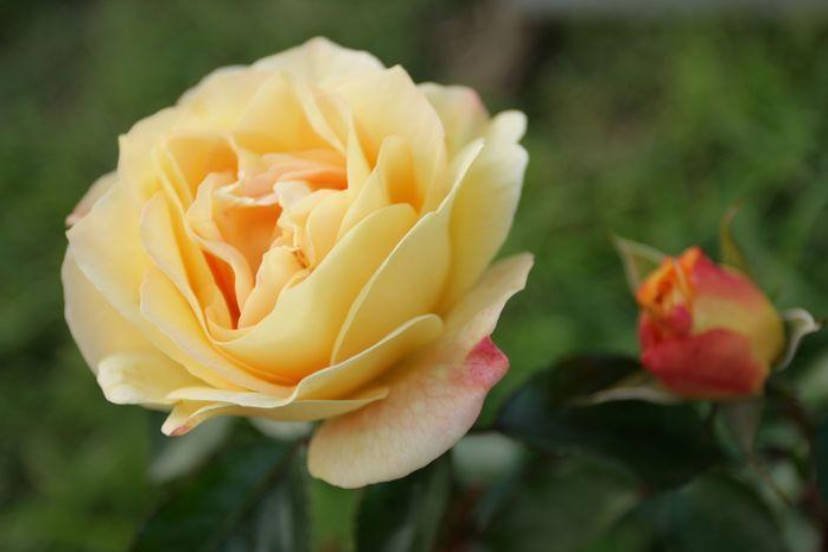
In addition, we, as consumers with their requests, do not allow breeders to focus only on this task.
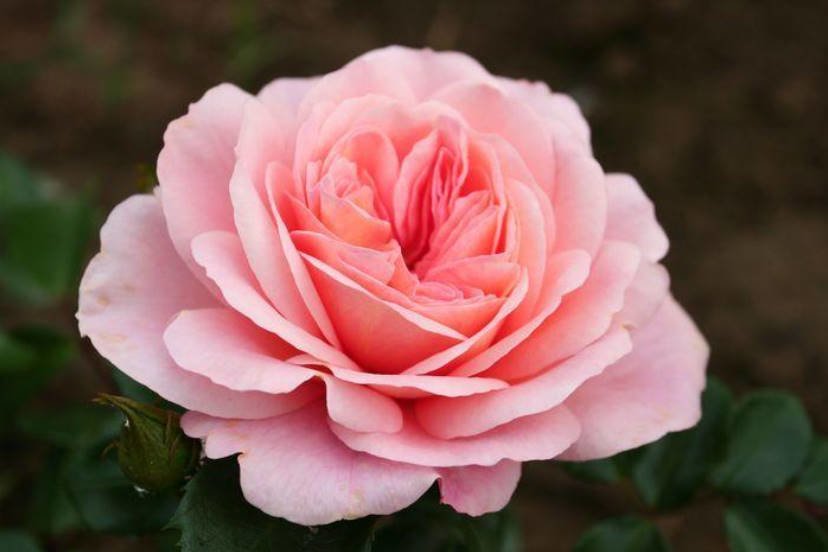
The assumption that producers of roses do not know about our problems, it is impossible to consider seriously. As a funny joke, you can take, for example, the statement of the famous breeder Samuel McGredy, who compares the disease of roses “with fading on the family silver, which, to restore the Shine, needs only a little polishing.” In fact, the problems of plant resistance to pathogens are shifted by the manufacturer to a wide range of modern remedies.
Left: the use of stimulants and excessive nutrition of wicker roses led to the flattening of shoots. Right: to show powdery mildew to students practicing in the nursery, we had to buy it in the garden center.
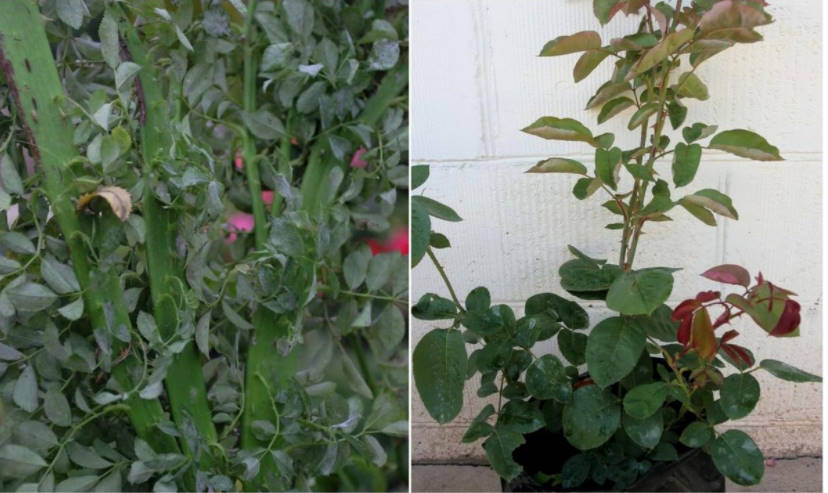
It’s time to order roses for the next season, and I look at the offers of numerous rose suppliers with horror. They look for little-known nurseries with their little-known or renamed others varieties and present them to us as sensation. For example:
- On the first available site all tea-hybrid roses bloom continuously (although it is known that they bloom in waves).
- Promise re-flowering even Gallic roses!
- All viewed me roses tolerate partial shade (although such variety is a rarity).
- All varieties without exception have high resistance to powdery mildew and black spot.
If you bring the variety only with such a high reputation, then the problems in the gardens? Why is not listed the code names and the year of recording all of these wonderful varieties? Perhaps, that this services they like or dislike, and can be varieties and retirement age? Information of similar quality can be found on the websites of other suppliers.
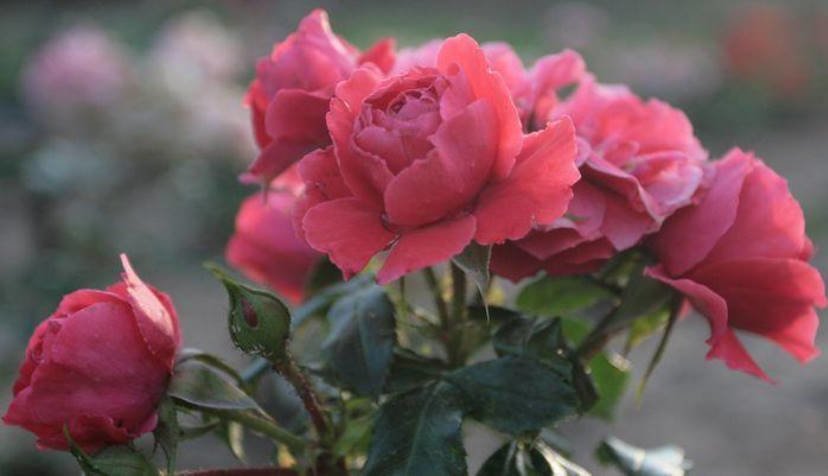
Sometimes roses of forgetfulness arise from obscurity and referred to as innovations. I constantly advise to choose roses of the new century, and we are lucky roses of the 50’s of the past! Then the priorities in the selection were different-color and shape, only some companies were difficult way – the elimination of unpretentious roses. Among the roses of this time there are outstanding varieties that have entered the history of rose growing and can be grown even today, but their units. Remember, the stability of the variety is genetically predetermined, but it can not be eternal.
Left: floribunda rose remarkable thick bushes neat shape with beautiful and healthy foliage. Right: Out of Rosenheim /W. Kordes, Sohne, (2010) attracts with its romantic flower shape and perfect foliage.
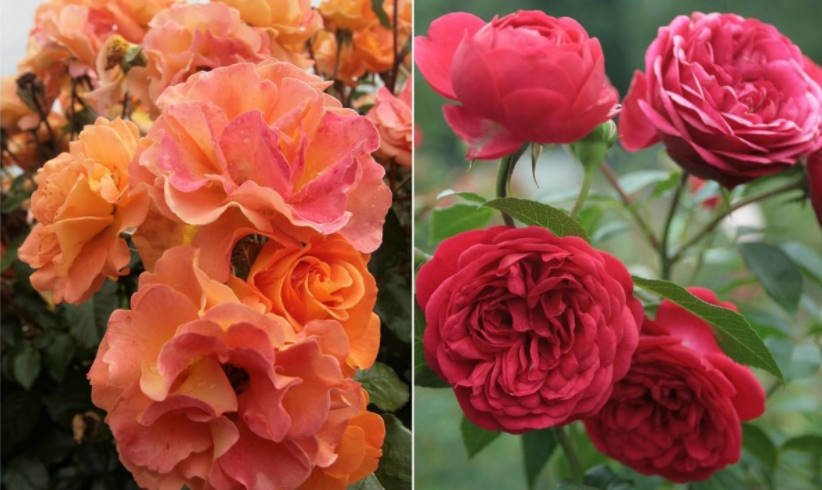
When laying large rosaries suggest to familiarize with the offer without passion and to consult a specialist.
Quality planting material
Quality seedlings significantly increase the chances of success, but quality problems arise constantly. Of exhausted long-term storage of seedlings can be grown only a plant that will look oppressed for a long time. At best, the roses begin to develop fully only in August, but the shoots do not have time to ripen and winter poorly. Every fan has encountered similar problems. Of the seven seedlings obtained in the spring of this year in the “world of Hobbies”, only two survived. Take the blame, say we could not cope with the spring planting of seedlings, we can not: we have a lot of experience. To check the quality upon receipt was difficult, the roses were Packed in a multi-layered cocoon of a thin film.
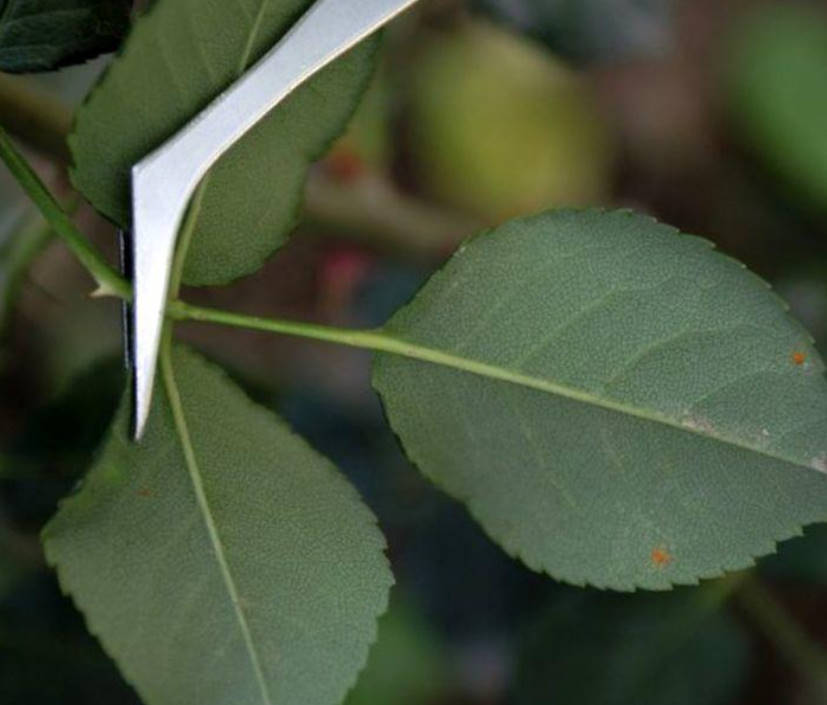
We also advise you to carefully examine the leafy seedlings in containers: there are cases of getting rust of roses this way.
Proper landing in a favorable time
At the beginning of the twentieth century, the recommendations were reduced to the benefits of autumn planting. In recent years, there are nurseries of roses, although they produce planting material is not enough. Our family organized a nursery of roses, where we began to grow only the most stable varieties under the licenses of major European companies.
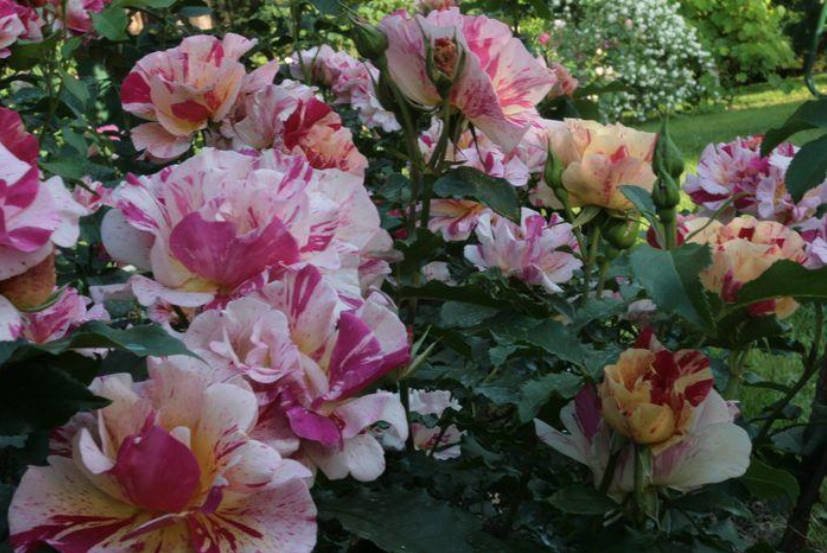
Spring planting can be explained only by technical reasons: seedlings of roses of European companies, come only in the spring. All seedlings which we plant in the spring are dug out in the fall, at the end of October — the beginning of November. Everyone can imagine the difficulties of long-term storage, transportation and distribution of orders in our, relatively speaking, garden centers. On the initial quality of the seedling at the time of digging it does not even matter, it is important that he got to his new owner alive. Sometimes a great performance on the seedlings as a result of prolonged storage so dehydrated that they resemble wood. All boxes, baskets, two-liter pots serve only for” overexposure ” of saplings. In addition, it is impossible to imagine that such amount of roots could grow a full seedling. When we dig seedlings in our nursery in autumn, the roots can barely fit in a 7-liter pot.
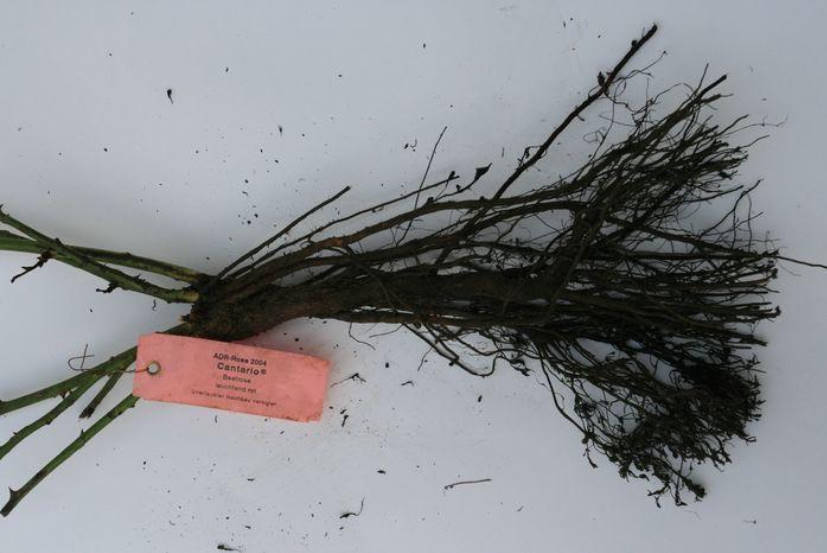
In autumn, the seedlings quickly take root, for reliable rooting is enough for 10-12 days. Our experience shows that even in difficult winters the youngest landings winter better.
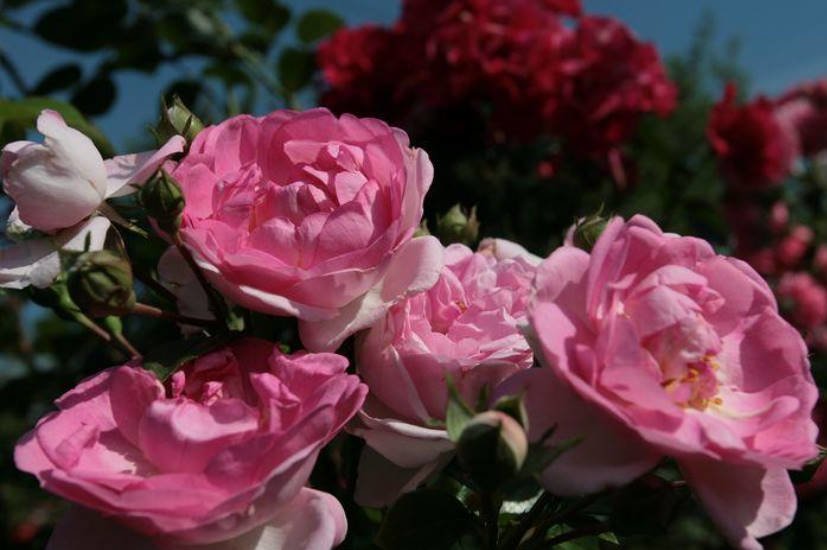
Spring planting of roses is much more difficult. Of course, if the spring planting of roses failed, you can not write off the failure only on the date of planting. According to our data, there are varieties that will not grow under any terms of planting in our conditions. All physiological processes and stages of ontogenesis (rhythms of nutrition, growth and development) cannot adapt (within the framework of genotypic plasticity) to changes in soil and climatic conditions. Simply put, not all varieties adapt to the conditions, and this is due not only to the severity of the climate, but also to the genotype of the variety.
Errors in all dates of planting roses include:
- soil loss around the roots during planting,
- thickening of a place of a Shield budding over 3-5 cm or its exposure,
- use when planting fertilizers and growth regulators.
The care of roses
The scheme of caring for roses includes a number of operations:
- preventive extermination by spraying in the fall and early spring;
- timely and balanced feeding;
- watering, loosening and weed control;
- ventilated shelters;
- timely shelter and deployment of roses;
- proper and timely pruning according to the garden group affiliation;
- mandatory spring watering.
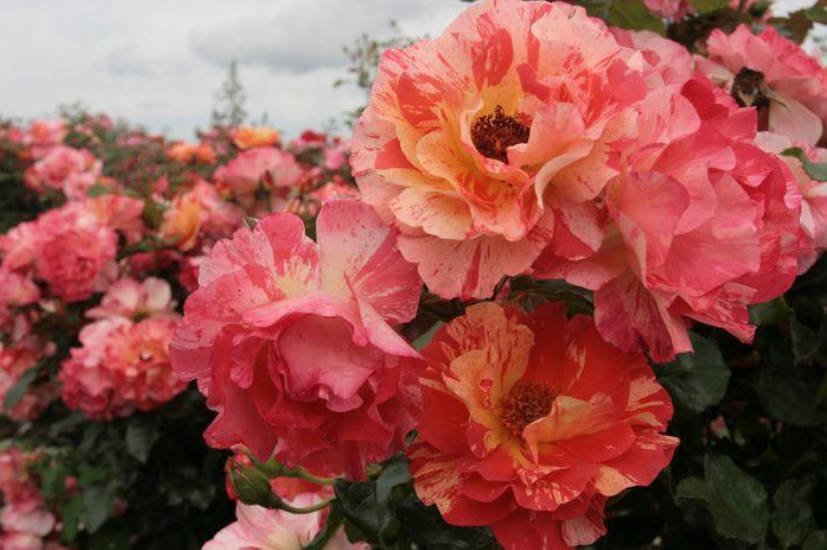
To mistakes relate:
- excessive fertilizing,
- neglect of tillage,
- systematic watering by sprinkling and cold water,
- early shelter of roses and excessive ” insulation»,
- previously, the naked shoots in spring, especially when deep freezing of the soil.
